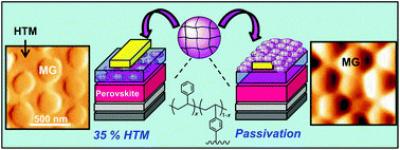Researchers from The University of Manchester have reported a new method that makes use of polystyrene particles (rather than expensive polymers) to reduce the costs and improve the stability of next-gen perovskite-based solar cells.

PSCs that use organometallic halide perovskite (OHP) as a light absorber face a known challenge of material degradation when exposed to water. This makes practical use quite limited. The cells also rely on a hole-transportation layer, which promotes the efficient movement of electrical current after exposure to sunlight. But manufacturing the hole-transportation organic materials is very costly and these lack long-term stability. This is where the use of insulating polystyrene microgel particles comes in.
The researchers explain: "The perovskite layer in solar cells is not inherently unstable, but the required HTM layer is. HTM layers made of congregated polymers are thin but they are also relatively expensive and contribute a significant portion of the total cost of the solar cell. In this study we used polystyrene, which is 1 ten thousandth of the cost of polymers to produce, and is also hydrophobic which helps improve the stability of PSCs. Overall the enhanced stability and lower costs of production hugely outweigh any of the decreased efficiency."
Going forward the team plans to further refine the microgel approach to minimize the impact on efficiency and work on reducing toxic lead content in PSCs.

